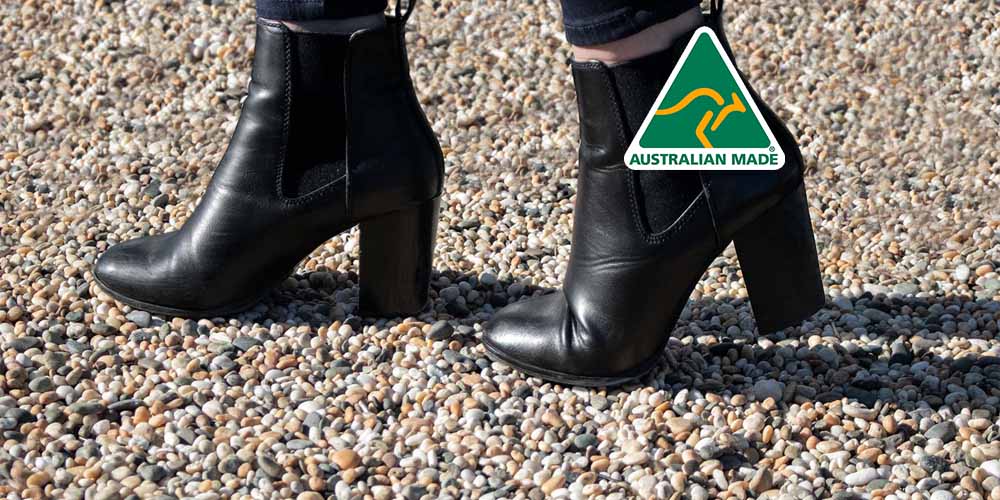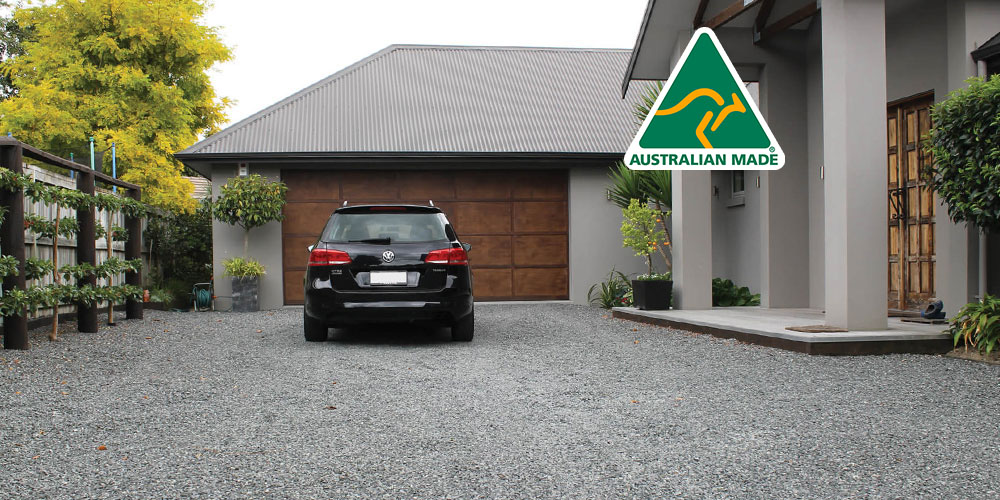Driveways are often the first impression people get of our home, especially if it’s a long driveway rising up a slope to the house. We want a driveway that feels welcoming and remains looking great, no matter the amount of use it gets. Driveways are a big investment, so we need one that’s designed to last, which means there are certain aspects we need to consider when designing the pavement surface.
On sloped driveways, especially when it rains, gravity becomes a major factor. It affects water runoff, as well as wear and tear of the driveway surface. By installing permeable paving, you’ll slow heavy water flow, filter any excess rainwater and disperse it more evenly into the surrounding environment. Permeable driveways help protect both the ground underneath and the surface, but only if they’re designed and built correctly.
Unprotected, the surface material will all-too-often shift and eventually move off the driveway from heavy rain or constant vehicle use, so we’re going to look at how to successfully create a pebbled driveway on sloped land using PebbleLock permeable paving panels combined with SureTex geotextile.
Designing a pebbled driveway for sloped terrain
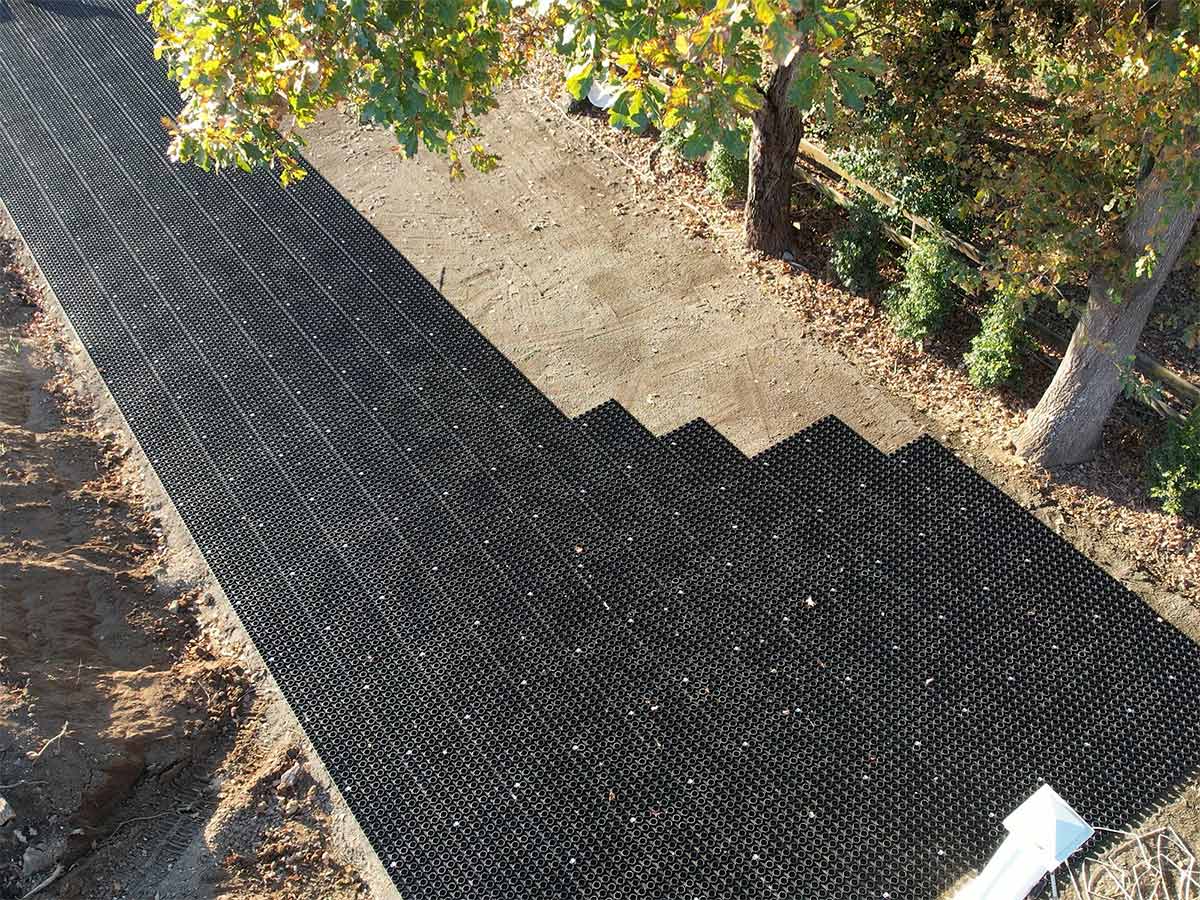
To better build a functional pebble driveway, there are various issues we need to be aware of in order to understand how to create a viable solution.
On sloped land, excess water can have a devastating effect. During heavy rainfall, it scours and erodes soil, either off to each side of the driveway or forcing its own way through the middle. Excess water can also oversaturate the soil underneath your driveway. If it collapses, the surface material sinks into that hole, which means you end up with potholes. Vehicles can also slowly push unsupported driveways into the soft soil over time, forming ruts, tyre-tracks and those ungainly raised sections down the middle of your driveway that end up scraping the bottom of your car.
To counter this, let’s look at a few different design aspects that will prevent the above from happening.
Drainage solution for a sloped driveway
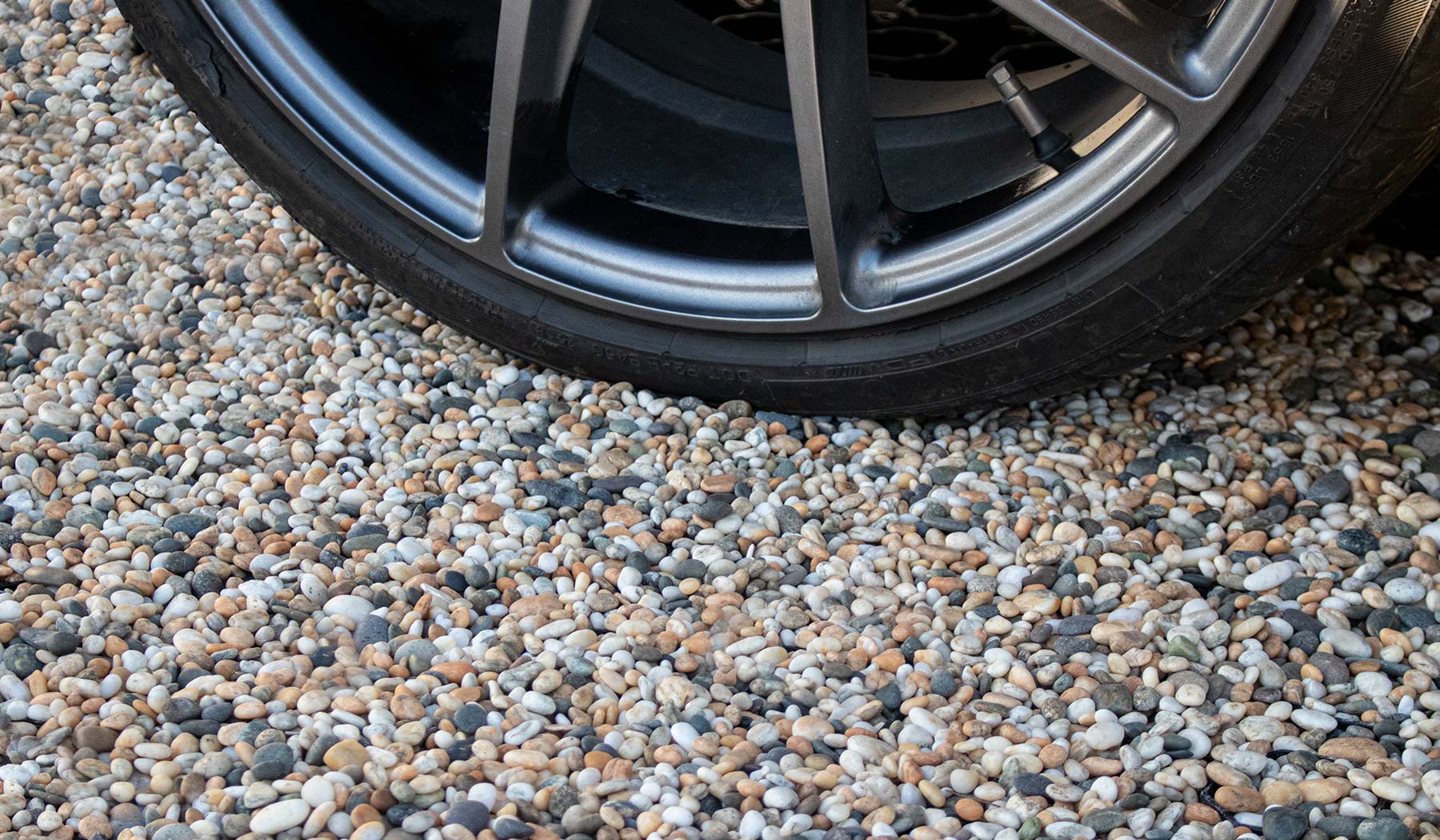
Excess water needs somewhere to go. When building on a slope, water is always going to find a way downhill, and unless we create a pathway, it will find its own way down, gouging and eroding soil along the way.
One of the benefits of Permeable Paving is that it stores, filters and slows down excess water. Depending on the environment surrounding the driveway up the slope, there may be ways to safely feed that water back into the garden to help nourish plants and root systems, but during really heavy falls, you’ll still need suitable drainage beside the driveway.
When creating the base level of sloped driveways, you can channel waterflow to the lower side of the driveway for water to feed into. Instead of rushing straight off, as it might on a concrete or asphalt surface, the water will feed through the pebbles and pavers. Any water that isn’t absorbed into the soil below will be even distributed off to the side of the driveway, which you can help direct by angling the slope when you create that first base layer and line it with geotextile (which we’ll look at in the next section). This will prevent the edges of your gardens from being washed away.
Any fast-flowing water coming from places other than your driveway may pick up dirt and soil particles along the way, so you’ll want to completely surround your drainage area with SureTex geotextile to prevent that from entering your stormwater system and clogging it up.
Good drainage:
- Protects waterways
- Stops scouring and erosion
- Diverts water to where it’s most needed
Filtration and support on a sloped driveway
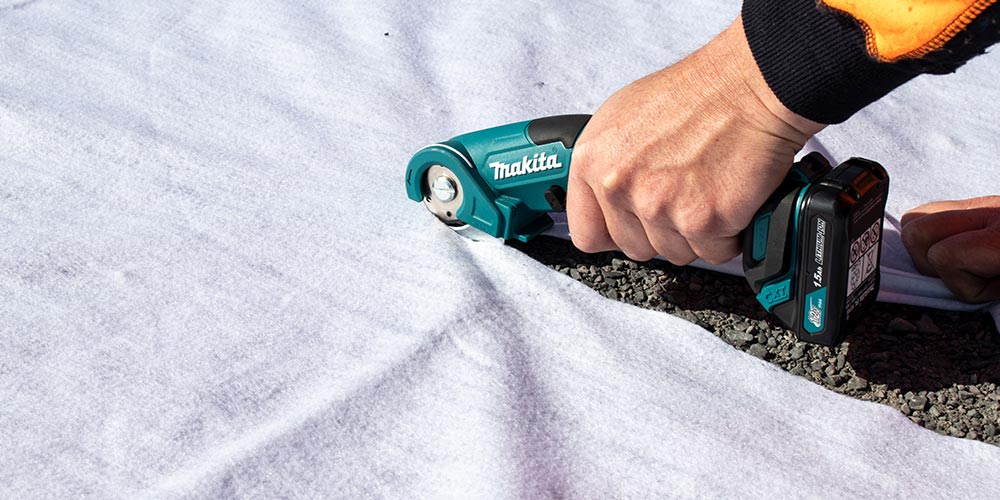
To prevent potholes and rutting on the surface of your driveway, it’s vital to place a layer of SureTex geotextile between the softer soil and compacted layer of drainage aggregate above. This hard-wearing fabric creates a protective barrier, preventing the stones from sinking into the soil. This is especially important during or after heavy rain when the subsoil gets oversaturated. Without geotextile, the heavy, sharp stones would either sink in or be pushed in by vehicles, which is predominantly what creates the ruts and potholes on the surface.
SureTex geotextile also acts as a water filter. Though soil particles and stones can’t pass through, water that has seeped through the drainage slowly filters into the soil below. This slow filtration means the soil is less likely to get oversaturated and is far less likely to erode or collapse. If it does, SureTex is tough enough to help support the aggregate layer above to minimize sinking.
Another added benefit is the prevention of weed growth. While not regarded as a weed mat, SureTex will stop weeds from forming.
SureTex Geotextile:
- Separates aggregate from the subsoil layer
- Prevents migration between the two layers, which stops rutting and potholes from forming
- Acts as a weed mat
Stabilising a sloped driveway
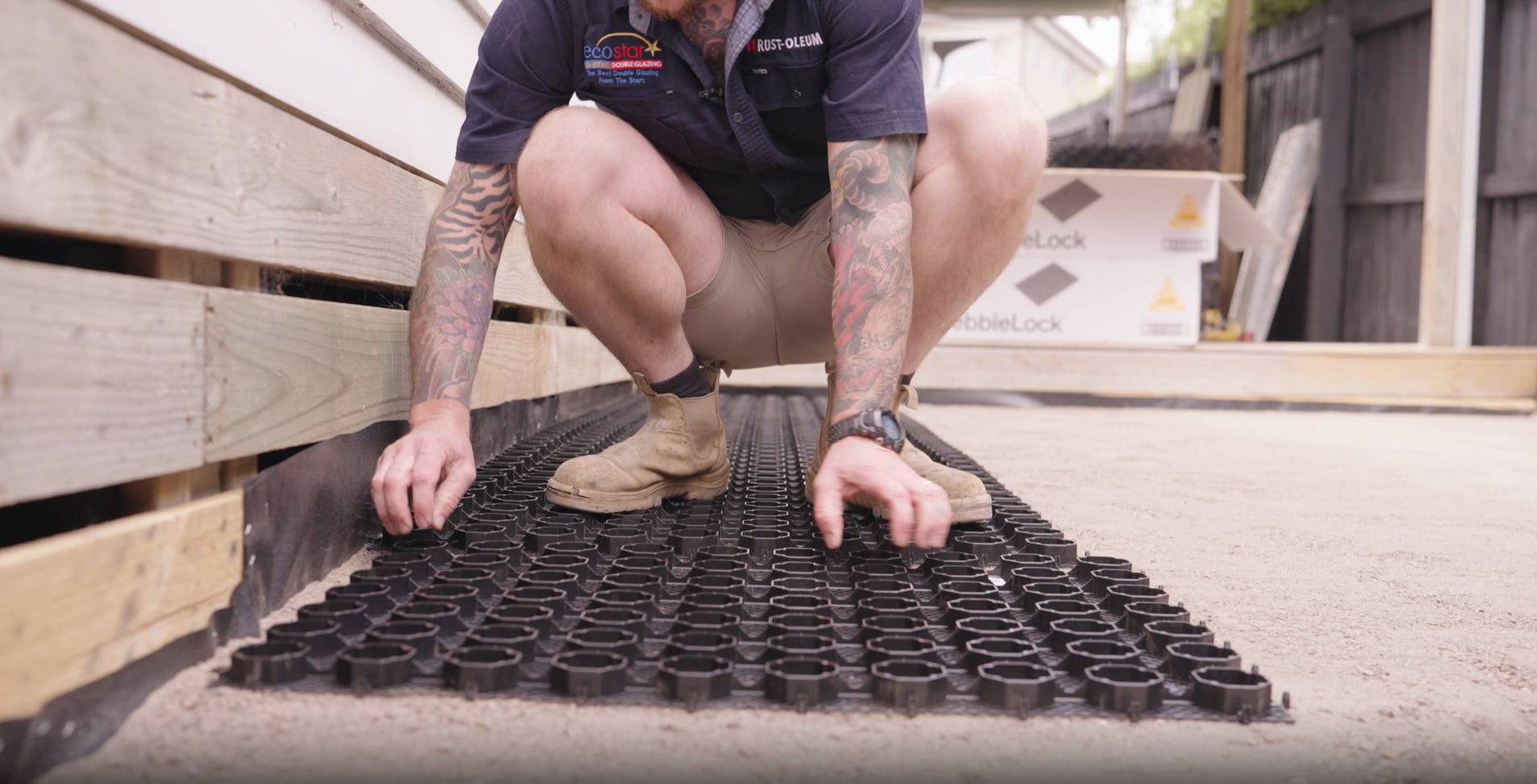
Perhaps the most important aspect of creating a pebble driveway on sloped land is stabilising the pebbles with Permeable Paving. With options to choose from, Permeable Pavers are what lock pebbles and gravel in place. PebbleLock is ideal for 7-14mm decorative stone and pebble driveways with light use traffic. With permeable paving, water won’t wash the stones away, vehicles won’t push stones aside, and because they’re tough, they will remain flat. You can use them on slopes up to 11o. For any surface stones sitting above the pavers that do shift, it’s just a matter of brushing them back into place.
Placed over the aggregate layers, PebbleLock is designed to catch excess water and slowly filter it away. Unlike asphalt or concrete where water pours off the hard, non-porous surfaces straight into your drains or eroding your gardens, with Permeable Paving, water gets trapped within the stones than captured within the pavers and drainage aggregate below. The pavers slow the waterflow, allowing it to filter through the aggregate layers to where SureTex will transfer it where you need it most. This is especially important in areas where you want to retain as much rainwater when it comes so you can gently feed it back into your garden.
Because water flows through the pavers, the surface area always remains dry. That means no puddling or pooling after it rains, so you can use your driveway exactly how you want to, in all weather conditions.
Permeable Pavers:
- Hold gravel/stones in place
- Can be used on slopes up to 11o
- Store and filter water during heavy rainfall
- Slow waterflow during heavy rainfall
- Keep the upper surface level flat and dry
- Are an environmentally responsible driveway choice
Materials and tools for your pebbled driveway
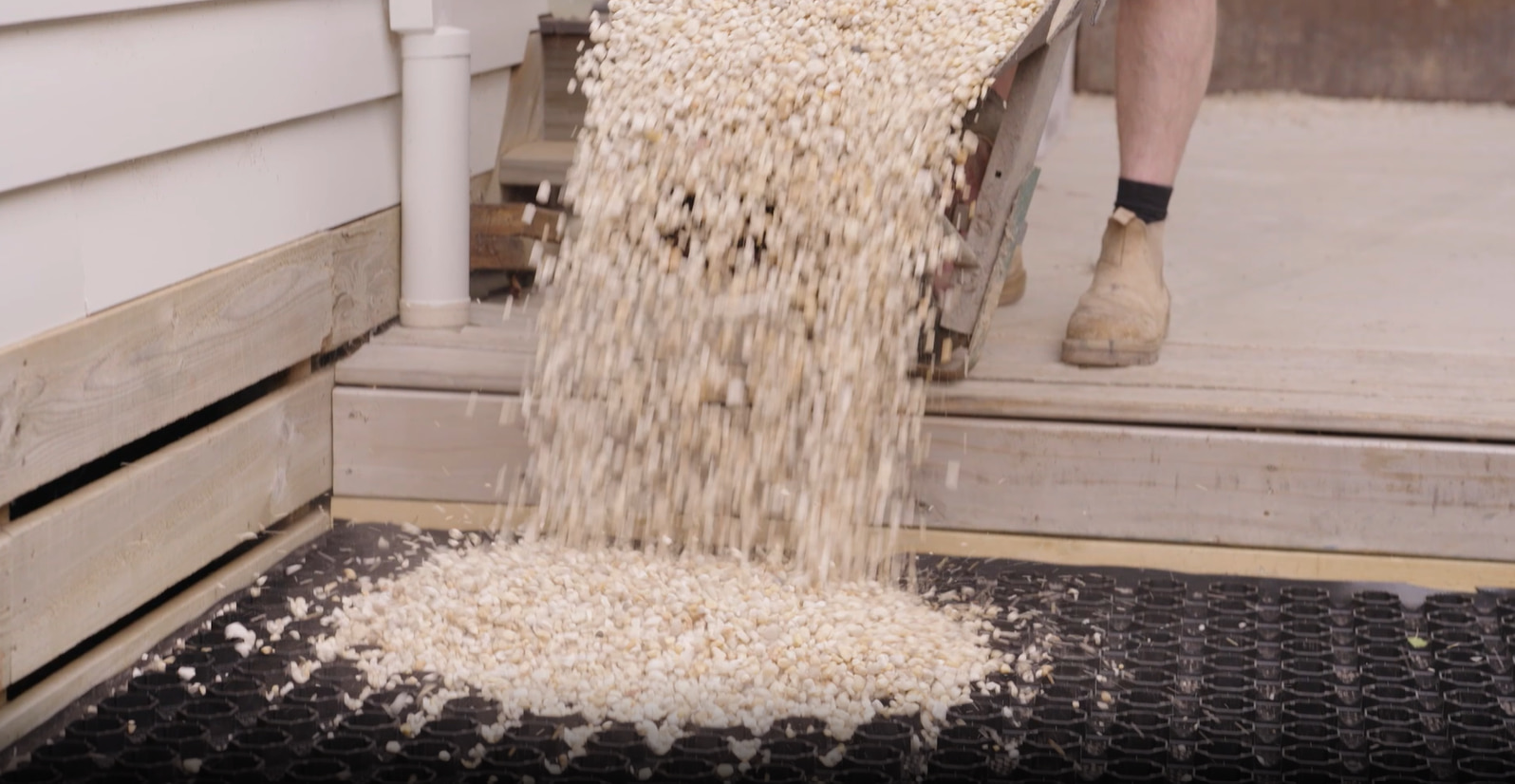
Strol has a great range of products designed especially for each aspect of construction. To make it easy to follow, here’s a quick list of everything you may need.
- SureTex – a geotextile fabric designed for soil separation, filtration and support. This is a must use item, placed between the subsoil and the aggregate layers. It is used in conjunction with the pavers to prevent potholes and rutting on the surface.
- Drainage Aggregate – commonly GAP20 or GAP 40, placed on top of the SureTex geotextile and compact.
- Crusher Dust – sometimes known as GAP7. This is a fine layer of drainage aggregate that helps lock the pavers in place and lets them settle into the drainage aggregate. This doesn’t need compacting, it’s there for the pavers to settle into.
- Permeable Paving – these pavers lock the stones in place while allowing water to filter through. Use SurePave for gravel driveways and highly trafficked areas, PebbleLock for driveways with light vehicle use, or SmartPave is another great option for pedestrian pathways and patios around the home, which has the geotextile backing attached.
- WeedMat Pins – 130mm or230mm, flat-head, galvanised steel pins for securing both the SureTex and permeable pavers into the ground.
- Gravel/Stones – depending on your usage, you can either use 7-14mm pebbles with PebbleLock and SmartPave, or up to 20mm aggregate with SurePave.
Check out our Retailers page to find where these innovative products can be purchased. For the aggregates, call around your local landscape suppliers or hardware store for the best options.
Constructing and maintaining your pebbled driveway
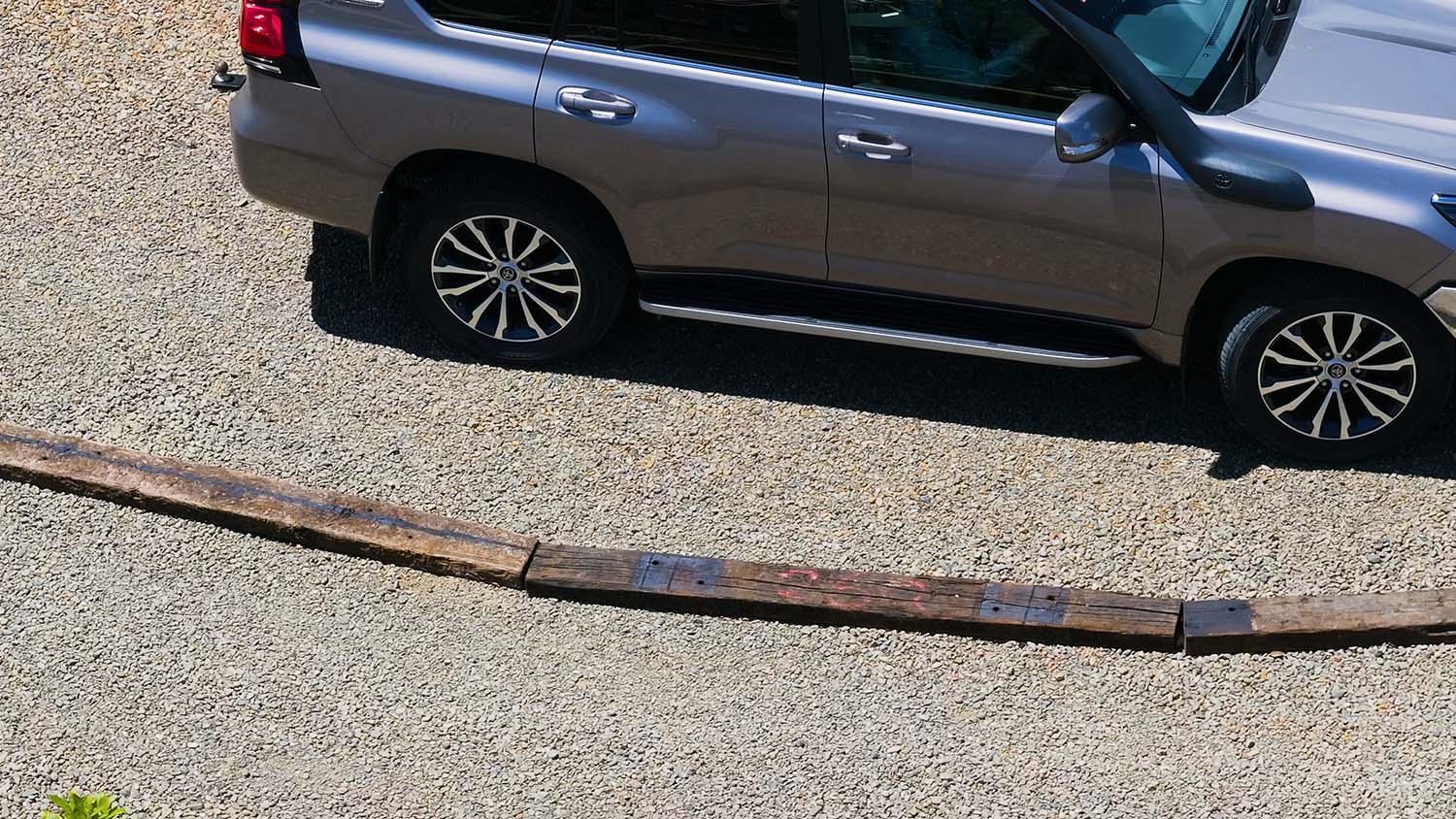
Whether it’s on a slope or a flat area, this easy-to-follow guide to building a permeable driveway will quickly get you underway. Before you begin, however, you’ll want to sort out exactly where your drainage will go.
Here are the quick steps you’ll want to follow.
- Cut out the area where your driveway will go, 100mm-150mm below the final surface level.
- Remove any debris such as tree roots and sharp stones.
- Cut out any drainage area.
- Lay SureTex geotextile over the drainage area, half-fill with drainage aggregate, place your perforated drains, then continue filling with drainage aggregate and cover the top with SureTex before covering with soil.
- Lay SureTex geotextile over the entire subsoil surface, making sure to overlap the fabric by 200mm, with the piece on the upper side placed on top of the piece on the lower side so water flows freely downhill.
- Pin SureTex in place using WeedMat pins.
- Cover SureTex with a 50mm-100mm layer of GAP20 or GAP40 drainage aggregate.
- Compact this layer.
- Cover with a 20mm layer of crusher dust.
- Place PebbleLock They use a clip-together system which helps keep them in place, but on highly stressed areas, we advise pinning them down using the bent re-bar pins.
- Cover the pavers with your choice of 7-14mm pebbles.
- Your new permeable driveway is now ready to use!
Tips for construction and maintenance.
- Make sure you extend SureTex geotextile beyond the edge of your driveway then cut back to shape in order to prevent weeds from growing in at the edges.
- Use a hard-brushed broom for spreading the stones and crusher dust into place.
- Leaves and loose stones can easily be brushed off or back into place.
Permeable Paving – Making Life Easier
Whether it’s for light traffic or heavy vehicle use, having a pebble driveway on sloped land is now just as easy to build as though it were on flat land. It’s practical, more environmentally responsible and with the functionality of permeable paving, your driveway now actively supports the surrounding environment.


